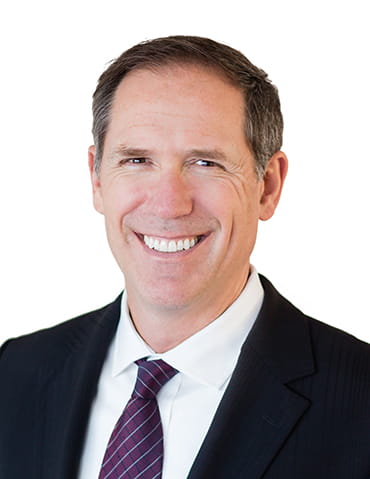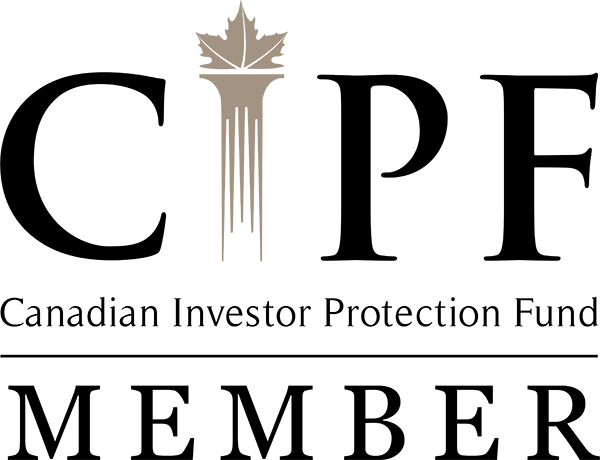Married with Children
Find Your Balance
There are many priorities and resultant questions at this stage of life. Should you focus on paying off your mortgage, invest in RRSPs, maximize your employer pension contributions, have mortgage insurance – or employer insurance – or an individual privately held insurance policy – or all? How much to save each month for retirement? What account to save it into, an RRSP or a TFSA? I have answers to all of your questions. Together, let’s create a plan for your financial future.
Think Long-Term
Actions taken today have a lot of time in which to bear fruit. Investments should be closely monitored, but there is no advantage to watching your investments minute by minute. Nobody looks at the value of their home – an investment that changes in value regularly – in this way. Yet, in reality, at this point in life a home is usually the investor’s largest asset – eclipsing their investment portfolio. Your investment portfolio must be viewed as a long-term asset – measured in years and decades. If the money you have is needed in the next five years or so, then it should be in cash or a GIC – but when this money is required to provide an income in retirement, then this is a long-term investment and needs to be viewed over a suitable long-term time period – say 5, 10, or 20 years. Investments made today have the benefit of compounding many times over. A $500 per month investment with a 7% rate of return, for example, could compound to over $580,000 in 30 years *. With compounding, time is on your side. *$6000((1.07^30-1)/0.07)
Plan your Comfortable Retirement
We all need to save today for our retirement in the future. It might seem like a long way off, but just as your childhood sped by, so will the years between now and retirement. There is a significant amount of time spent balancing today’s needs with future retirement income needs. Nobody wants to live like a pauper today, saving every penny, so that they can retire comfortably, but if the proper steps are not taken today, then there could be insurmountable problems that become clearer closer to retirement. If an investor is $1,000,000 short of their retirement goal, it may be possible to catch up if they have a couple of decades on their side – but virtually impossible when that time to retirement is too short. You don’t want surprises in your retirement plan. You want to have the assurance that a comfortable retirement is in sight – even if it is a long way off.
Retirement Planning - the Definition
Retirement planning involves inputting key assumptions such as inflation, investment growth rates, age of retirement, current investments, planned future investments, pensions, and of course the amount of income that you would like to have in retirement into retirement planning software. Of course there are other factors and considerations that are essential for your long term plan which I will also advise you on. If your current retirement plan is not desirable, you will know what changes can be made today to improve your financial situation tomorrow.
Grow your Money Conservatively
With respect to investments, growth is favored at this stage of your life. Growth investing means owning a portion of your investment portfolio in stocks either individually or in a mutual fund. You need a diversified portfolio – holding a variety of investments so that you increase your chances of success and decrease your chances of your portfolio varying in value by extreme amounts. The worst thing that can happen during these years is to not save or to be scared or dissatisfied with the stock market to such a degree that you lose faith in the value of long-term investing. This happens to investors if they invest too aggressively and experience too much volatility. Your investment portfolio should NOT be keeping you up at night.
Contrary to popular belief, you won’t make more money by investing in high risk investments than you will by investing in quality, conservative investments. An example of high risk investing is owning investments in small, fledgling companies versus owning stock in large, well-run companies that have been in business for a long time and have a proven track record. In my experience I have found no value whatsoever in owning these high risk “get-rich-quick” investments. If you lose 50% on an investment, then you need to make 100% just to break even. It is much better to simply position your investments so that there is much less chance of losing money. This conservative approach has worked well for investors since investing began. Warren Buffett, one of the most successful investors in history, is famous for saying that “there are three rules to investing: Never lose your money. Never lose your money. And never lose your money.”
Plan to Spend Less than you Earn
If you make $1 and spend $1.01 you will always have a financial problem. It seems to be human nature for us to spend what we make. The solution to this problem is to set up a monthly savings plan so that your long-term retirement savings are taken directly out of your bank account each month. You don’t need to make a decision every month – you have already made the decision to save. Your retirement future looks great and you get to enjoy yourself today knowing that you are financially prepared for the future.
My role is not to set a budget or tell you where to spend your money, but to ask probing questions and remind you of the importance of long term planning. Just as life so far has gone by quickly, so will the next 20 years. Let’s create a financial plan together so you can have peace as retirement approaches.
Reduce Debt
Of course there is always a balance between living comfortably today and living comfortably in the future. You don’t want to burden yourself with long-term savings or debt obligations that make you poor today. It may be necessary to slightly reduce your spending and debt-obligations so that you can save for retirement. Savings today can really compound into a lot of money when you have decades before you retire.
Children's Education
There is no better way to save for your children(s) education than through a Registered Education Savings Plan (RESP). There are a couple of age-related and other province-specific grants available, but every child will qualify for the Canadian Education Savings Grant (CESG). From the calendar year your child is born, your child is eligible for a 20% grant up to $500 per year in addition to the contributions made to the RESP by you – or someone close to you – called the Subscriber. There are annual maximums and “catch-up” maximums and lots of other considerations to take into account but those details are best discussed in person. It is safe to say that the RESP is an excellent savings plan for your children’s post-secondary education.
High Teen Expense Years
Brace yourself. If you are not already experiencing it, you may not believe just how expensive your beautiful child or children are going to become as they age. Whether it is more expensive clothes, shoes, activities,
Find Your Balance
There are many priorities and resultant questions at this stage of life. Should you focus on paying off your mortgage, invest in RRSPs, maximize your employer pension contributions, have mortgage insurance – or employer insurance – or an individual privately held insurance policy – or all? How much to save each month for retirement? What account to save it into, an RRSP or a TFSA? I have answers to all of your questions. Together, let’s create a plan for your financial future.
Think Long-Term
Actions taken today have a lot of time in which to bear fruit. Investments should be closely monitored, but there is no advantage to watching your investments minute by minute. Nobody looks at the value of their home – an investment that changes in value regularly – in this way. Yet, in reality, at this point in life a home is usually the investor’s largest asset – eclipsing their investment portfolio. Your investment portfolio must be viewed as a long-term asset – measured in years and decades. If the money you have is needed in the next five years or so, then it should be in cash or a GIC – but when this money is required to provide an income in retirement, then this is a long-term investment and needs to be viewed over a suitable long-term time period – say 5, 10, or 20 years. Investments made today have the benefit of compounding many times over. A $500 per month investment with a 7% rate of return, for example, could compound to over $580,000 in 30 years *. With compounding, time is on your side. *$6000((1.07^30-1)/0.07)
Plan your Comfortable Retirement
We all need to save today for our retirement in the future. It might seem like a long way off, but just as your childhood sped by, so will the years between now and retirement. There is a significant amount of time spent balancing today’s needs with future retirement income needs. Nobody wants to live like a pauper today, saving every penny, so that they can retire comfortably, but if the proper steps are not taken today, then there could be insurmountable problems that become clearer closer to retirement. If an investor is $1,000,000 short of their retirement goal, it may be possible to catch up if they have a couple of decades on their side – but virtually impossible when that time to retirement is too short. You don’t want surprises in your retirement plan. You want to have the assurance that a comfortable retirement is in sight – even if it is a long way off.
Retirement Planning - the Definition
Retirement planning involves inputting key assumptions such as inflation, investment growth rates, age of retirement, current investments, planned future investments, pensions, and of course the amount of income that you would like to have in retirement into retirement planning software. Of course there are other factors and considerations that are essential for your long term plan which I will also advise you on. If your current retirement plan is not desirable, you will know what changes can be made today to improve your financial situation tomorrow.
Grow your Money Conservatively
With respect to investments, growth is favored at this stage of your life. Growth investing means owning a portion of your investment portfolio in stocks either individually or in a mutual fund. You need a diversified portfolio – holding a variety of investments so that you increase your chances of success and decrease your chances of your portfolio varying in value by extreme amounts. The worst thing that can happen during these years is to not save or to be scared or dissatisfied with the stock market to such a degree that you lose faith in the value of long-term investing. This happens to investors if they invest too aggressively and experience too much volatility. Your investment portfolio should NOT be keeping you up at night.
Contrary to popular belief, you won’t make more money by investing in high risk investments than you will by investing in quality, conservative investments. An example of high risk investing is owning investments in small, fledgling companies versus owning stock in large, well-run companies that have been in business for a long time and have a proven track record. In my experience I have found no value whatsoever in owning these high risk “get-rich-quick” investments. If you lose 50% on an investment, then you need to make 100% just to break even. It is much better to simply position your investments so that there is much less chance of losing money. This conservative approach has worked well for investors since investing began. Warren Buffett, one of the most successful investors in history, is famous for saying that “there are three rules to investing: Never lose your money. Never lose your money. And never lose your money.”
Plan to Spend Less than you Earn
If you make $1 and spend $1.01 you will always have a financial problem. It seems to be human nature for us to spend what we make. The solution to this problem is to set up a monthly savings plan so that your long-term retirement savings are taken directly out of your bank account each month. You don’t need to make a decision every month – you have already made the decision to save. Your retirement future looks great and you get to enjoy yourself today knowing that you are financially prepared for the future.
My role is not to set a budget or tell you where to spend your money, but to ask probing questions and remind you of the importance of long term planning. Just as life so far has gone by quickly, so will the next 20 years. Let’s create a financial plan together so you can have peace as retirement approaches.
Reduce Debt
Of course there is always a balance between living comfortably today and living comfortably in the future. You don’t want to burden yourself with long-term savings or debt obligations that make you poor today. It may be necessary to slightly reduce your spending and debt-obligations so that you can save for retirement. Savings today can really compound into a lot of money when you have decades before you retire.
Children's Education
There is no better way to save for your children(s) education than through a Registered Education Savings Plan (RESP). There are a couple of age-related and other province-specific grants available, but every child will qualify for the Canadian Education Savings Grant (CESG). From the calendar year your child is born, your child is eligible for a 20% grant up to $500 per year in addition to the contributions made to the RESP by you – or someone close to you – called the Subscriber. There are annual maximums and “catch-up” maximums and lots of other considerations to take into account but those details are best discussed in person. It is safe to say that the RESP is an excellent savings plan for your children’s post-secondary education.
High Teen Expense Years
Brace yourself. If you are not already experiencing it, you may not believe just how expensive your beautiful child or children are going to become as they age. Whether it is more expensive clothes, shoes, activities, or hair-cuts, your household expenses are going to rise considerably. This is normal but needs to be anticipated and planned for so that it does not derail your retirement savings plan.
Protect Your Income
Life insurance is required if you have anyone who relies on your income. Your life insurance is essential for your dependents’ financial future. Accident and Sickness (also known as Disability and Critical Illness) insurance is required so that you can receive income even when bad health strikes. Your income needs don’t stop just because you are unable to work due to health issues. You need to be protected against all financial risks.
Financial Advice
My role is to be a source of answers and discussion for all questions financial.
Have Fun
You have addressed all of your financial questions and concerns. You are reducing your debt and saving for retirement. You are spending less than you earn. You know that your financial future looks fantastic. You can peacefully enjoy today knowing that you are ready for anything that life has in store for you.
savings plan.Protect Your Income
Life insurance is required if you have anyone who relies on your income. Your life insurance is essential for your dependents’ financial future. Accident and Sickness (also known as Disability and Critical Illness) insurance is required so that you can receive income even when bad health strikes. Your income needs don’t stop just because you are unable to work due to health issues. You need to be protected against all financial risks.
Financial Advice
My role is to be a source of answers and discussion for all questions financial.
Have Fun
You have addressed all of your financial questions and concerns. You are reducing your debt and saving for retirement. You are spending less than you earn. You know that your financial future looks fantastic. You can peacefully enjoy today knowing that you are ready for anything that life has in store for you.
Highlights
- Focus on growing investments while saving for retirement and reducing taxes through RRSP and TFSA investment contributions.
- A documented retirement plan is essential to achieve set goals.
- Saving for children’s post-secondary education with a Family RESP
- Properly balance paying down debt obligations while investing enough for a comfortable retirement.
- Ensure that future income is protected with adequate Life and Accident and Sickness Insurance.












